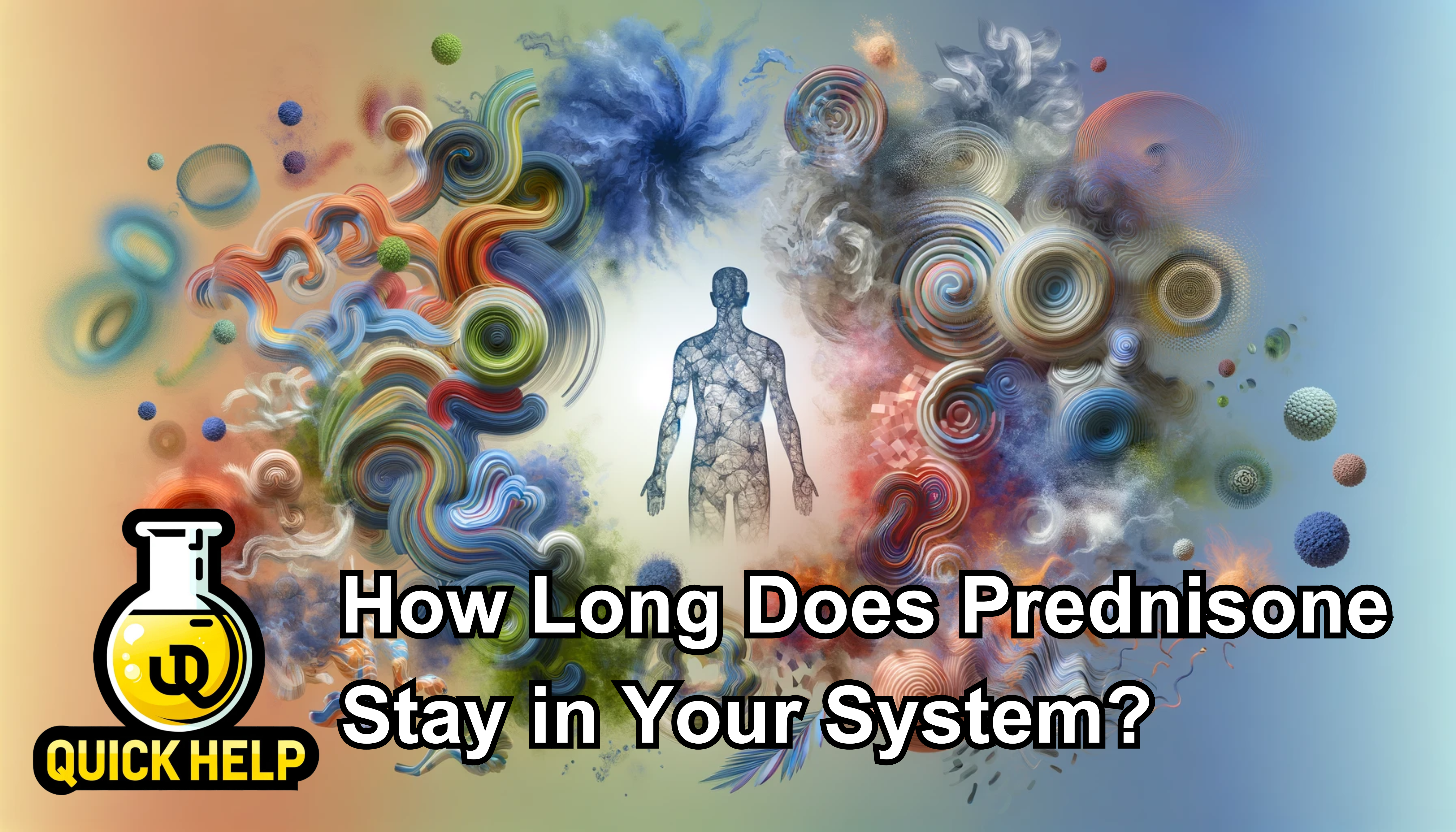Understanding the Nature of LSD
LSD, short for lysergic acid diethylamide, is a potent hallucinogenic drug that has captured the fascination of people for decades. Many individuals have embarked on psychedelic trips, seeking the mind-altering effects that LSD offers. However, for those in the recovery community or individuals facing drug screens and tests, understanding how long LSD stays in the body is of utmost importance. This article aims to provide comprehensive information on this aspect, delving into the various forms of drug testing such as urine, saliva, blood, and hair follicle tests. It will also explore the factors that can influence the retention time of LSD in one’s system, such as body mass, hydration, and metabolism. Whether you are seeking answers to the question of how long LSD stays in your urine or looking for guidance in a recovery journey, this article will address the different aspects related to LSD and its presence in the body.
Defining LSD: What is it?
LSD, short for Lysergic Acid Diethylamide, is a powerful hallucinogenic drug that has gained popularity for its mind-altering effects. It is typically taken orally, either in the form of liquid, grains on paper, or even in tablet or capsule form. Once ingested, LSD quickly enters the bloodstream and makes its way to the liver, where it is metabolized into different compounds called metabolites. These metabolites are then excreted from the body through urine. Though the length of time LSD stays in your system can vary depending on factors such as dosage, weight, age, and liver health, urine drug screenings can detect LSD presence for up to 2-4 days after use. It is important to note that LSD is an illegal substance and its misuse can lead to a variety of physical and psychological risks.
Exploring the Impact of LSD on the Human Body
LSD is a potent hallucinogenic drug that has a profound impact on the human body. One of the questions frequently asked by users and researchers is: how long does LSD stay in your system? In terms of urine, LSD can typically be detected for up to 1-4 days after use. However, it’s important to note that individual factors such as metabolism and dosage numbers can play a significant role in the duration that LSD stays in your body. Studies have shown that LSD usage can result in a variety of physical and psychological effects, including increased heart rate, changes in body temperature, mood swings, and hallucinations. The drug affects the brain by binding to serotonin receptors and altering neural pathways, which can lead to altered judgment, intense feelings, and changes in perception of surroundings. LSD’s impact on the body is complex, and its effects can vary from person to person, making it crucial for individuals to understand the potential consequences before embarking on their journey with this powerful substance.
LSD’s effects on the body can be influenced by various factors, both internal and external. Body composition, such as body fat percentage, muscle mass, and hydration level, can all contribute to how long LSD stays in the system and the intensity of its effects. In addition, individual tolerance to LSD plays a role in the duration and experience of tripping. The half-life of LSD, which refers to the time it takes for the drug to decrease by half in the body, is typically around 3-5 hours. However, traces of LSD can still be detected in blood, urine, saliva, and hair samples for a longer period. Drug testing methods, such as liquid-liquid extraction, liquid chromatography, and mass spectroscopy, are used to detect LSD in various samples. Understanding the factors that influence LSD’s retention time in the body is crucial for both individuals using the drug and researchers studying its effects.
Unraveling the Lifespan of LSD in the System
Understanding how long LSD stays in the body is important for individuals considering or experiencing the consequences of an acid trip. LSD, also known as lysergic acid diethylamide, is a hallucinogenic substance that gained popularity during the counterculture movement of the 1960s. This psychedelic drug is often associated with creativity and potential health benefits, as advocated by figures such as Timothy Leary. However, LSD can also lead to adverse effects and is classified as a Schedule I substance due to its potential for abuse and the risks it poses to mental health. When ingested, LSD acts on the brain chemicals that control behavior and influence the senses and thinking of individuals. The effects of LSD can vary from person to person and are influenced by a variety of factors, including the dose, tolerance, potency, and metabolism of the individual. Consequently, the detection window for LSD in urine tests or other drug screens can vary as well. It is important for individuals struggling with LSD substance abuse or addiction to seek substance use assistance and support from mental health professionals and drug abuse programs. These programs can provide a level of care that addresses the individual’s health problems and battles with drug dependence. Outpatient care, therapy, and medication management are often part of the approach taken by professionals in supporting individuals through LSD withdrawal and recovery. Different insurance providers may offer coverage for these services, which can be discussed with a mental health professional for guidance.
Acid Metabolism: How the Body Processes LSD
The process of acid metabolism, or how the body processes LSD, plays a crucial role in determining how long the drug stays in your system. LSD is rapidly absorbed into the bloodstream after ingestion, typically reaching peak levels within 30 to 90 minutes. The drug is then metabolized by the liver into various metabolites, including lysergic acid ethyl and di-hydroxy LSD. These metabolites are excreted primarily in urine, but can also be detected in blood, saliva, and hair samples. The duration of LSD’s effects and its presence in the body can vary widely between individuals, depending on factors such as weight, age, health, and method of use. It is important to note that LSD does not stay in the body for an extended period like some other drugs, with its effects typically lasting 6 to 12 hours, while metabolites can be detected up to 2 to 3 days in urine tests.
The metabolism of LSD also affects the experience and effects of the drug. LSD is known for its psychedelic properties, causing hallucinations, changes in perception, and altered mood states. The onset of these effects is relatively rapid, typically within 30 to 60 minutes after ingestion. LSD affects the serotonin receptors in the brain, leading to the distortion of sensory input and an enhanced experience of colors, shapes, and sounds. Users may also experience altered sense of time, synesthesia (where one sense triggers perception in another, like seeing sound or hearing colors), and changes in thought patterns and emotions. It is important to note that LSD use carries certain risks, including the potential for unpredictable trips, flashbacks, and impaired judgment. LSD should be used with caution, especially in individuals with underlying mental health conditions or those taking certain medications, such as lithium or antidepressants, as interactions between these substances can have serious consequences.
Contingencies Impacting LSD Retention Time
Contingencies impacting LSD retention time vary from person to person and can be influenced by a range of factors. One of the primary considerations is how long LSD stays in your system, particularly in urine. LSD can be detectable in urine for up to 2-4 days after use, but the timeframe can be longer depending on individual metabolism and other variables. It’s important to note that urine tests for LSD are not commonly administered in standard drug screenings, as LSD is not a major concern for abuse or addiction. However, in specific cases such as inpatient treatment programs or certain professions, urine tests for LSD may be conducted.
Some threats and behaviors associated with LSD use include fear, loss of control, and potential for hallucinations, but it’s crucial to remember that LSD does not typically lead to insanity, death, or long-term despair. The effects of LSD can vary greatly based on an individual’s mindset, environment, and prior experiences. Feelings of euphoria, altered perception, and emotions outside of the normal range are common aspects of an acid trip. It is important to approach LSD use with caution and understanding of the potential risks and warning signs of a bad trip, such as disturbing thoughts or extreme agitation. In the case of a negative experience or lasting psychological disturbances, seeking treatment options or professional help is recommended.
(Note: Please make sure to properly cite and reference any external sources used in the article.)
Drug Detection: Identifying the Presence of LSD
Identifying the presence of LSD in the body can be a complex process. One common method is through urine testing, which can provide insights into how long LSD stays in your system. The specifics of this type of drug test involve detecting LSD metabolites, which are compounds formed when the body breaks down the drug. Factors such as body composition, dose, and metabolism play a role in how long LSD remains detectable in urine. Another method of drug testing for LSD is through blood samples. Research has shown that the half-life of LSD in the body is around three to four hours, meaning it takes this amount of time for the concentration of the drug to decrease by half. It’s important to note that the presence of LSD in urine or blood does not necessarily indicate recent drug use, as the effects of LSD can last much longer than the drug’s detection window in the body. Ultimately, accurate and reliable drug testing methods are crucial in answering questions about the presence of LSD in the body and its potential impact on an individual’s health and wellbeing.
Time Frame: The Length of LSD Detection in Urine
The detection window for LSD in urine can vary depending on various factors. On average, LSD can be detected in a urine sample for up to three days after ingestion. However, it’s important to note that this time frame can be influenced by factors such as individual metabolism, dosage, and frequency of use. LSD is rapidly metabolized by the body and is broken down into its inactive form, making it difficult to detect for an extended period of time. It is worth mentioning that there are also other drug testing methods, such as blood and saliva testing, that can detect the presence of LSD, but they may have different detection windows compared to urine testing.
Urine testing for LSD can be a valuable tool in understanding its usage and potential implications. The presence of LSD in urine samples indicates recent use and can provide valuable data for surveys and studies. This information can be crucial in educating individuals about the dangers of LSD and exploring alternatives to its use. The ability to detect LSD in urine helps researchers and healthcare professionals assess the impact of the drug on different ages and populations, as well as evaluate the effectiveness of therapies and interventions for LSD addiction. By understanding how long LSD stays in the body, urine testing plays a significant role in ensuring the safety and well-being of individuals and communities.
Drug Testing Methods for LSD: Accuracy and Limitations
Drug testing methods for LSD play a crucial role in accurately identifying the presence of this hallucinogenic substance in the body. One common question is how long does LSD stay in your system, specifically in urine? The answer varies depending on several factors, including the individual’s metabolism, the amount of LSD consumed, and the frequency of use. It is important to note that LSD is rapidly metabolized and typically does not remain detectable in urine for an extended period. However, detecting compounds related to the detox process or any potential health problems related to LSD use can still be achieved through comprehensive drug testing methods conducted by healthcare professionals at specialized facilities for addiction treatment. Such drug detox and detoxification protocols are designed to support individuals struggling with LSD addiction and provide them with the necessary resources, insights, and coping strategies to overcome their substance abuse.
The Variables Influencing LSD Length in Your System
The length of time that LSD stays in your system can vary greatly depending on several factors. Studies have shown that LSD can be detected in urine for up to 3 days after use, but in some cases, it can last longer. The dosage and frequency of use play a significant role in how long LSD’s effects may last. Additionally, individual factors such as body weight, metabolism rate, and liver health can impact the retention time of the drug. It’s important to note that while LSD is not physically addictive, some people may develop a psychological dependence on the drug and continue to experience withdrawal symptoms, even after the LSD has left their system. Ultimately, the length of time LSD stays in your system can vary from person to person, and it’s crucial to seek professional help and treatment if you or someone you know is struggling with LSD use.
Personal Factors Affecting LSD Metabolism
Personal factors can significantly influence how long LSD stays in your system, particularly in urine samples. The duration of LSD’s effects on the body can vary from person to person due to a range of factors. For example, the amount of LSD doses taken, the quality of the drug, and individual metabolism all play a role in the length of time LSD stays in your body. Additionally, mental health disorders and the use of other substances can also impact LSD metabolism. For individuals seeking treatment options for LSD withdrawal or seeking a diagnosis from a healthcare professional, understanding these personal factors is crucial.
One important personal factor that affects LSD metabolism is the overall health and functioning of a person’s organs, such as the liver and brain. The liver plays a key role in metabolizing LSD, breaking it down into byproducts that can be excreted from the body. If a person’s liver is not functioning optimally, it may take longer for LSD to be processed and eliminated. Similarly, the functioning of the brain can also influence the metabolism of LSD. Researchers have found that certain chemicals and compounds present in the brain can impact the rate at which LSD is metabolized. Understanding these personal factors can help doctors and healthcare providers tailor treatment plans and determine appropriate dosages for individuals considering LSD-assisted psychotherapy or dealing with LSD-related issues.
External Influences on LSD Retention Time
External influences can have a significant impact on the length of time LSD stays in your system, especially in urine. Factors such as age, overall health, and drug use history can affect how long LSD traces remain detectable in the body. Additionally, the structure of the drug itself plays a role in its retention time. LSD is known to be rapidly absorbed by the body, with peak concentrations reached within 2-3 hours after ingestion. After that, the drug undergoes metabolism in various organs such as the lungs, thymus, and kidneys. However, it is important to note that LSD has a relatively short half-life, typically ranging from 2-5 hours in humans. This means that the effects of LSD can wear off relatively quickly compared to other psychoactive substances.
Various external factors can also influence the duration of LSD’s effects on the body. For example, the dose taken can impact the length of the trip and the presence of side effects. Additionally, the setting in which LSD is consumed can affect the individual’s experience. Environmental factors such as noise, lighting, and overall safety can contribute to the overall trip experience and potentially affect the retention time of LSD in the system. It is worth noting that LSD is not physically addictive, but it can lead to psychological dependence and cravings. In some cases, individuals may experience an “afterglow” effect following LSD use, characterized by heightened sensitivity and positive mood. It’s important to be aware of the potential risks and dangers associated with LSD use, including the potential for flashbacks, stress, and impaired perception and attention. If you or someone you know is struggling with LSD use, it is important to seek help from a healthcare provider or addiction treatment professionals.
Conclusion
Understanding how long LSD stays in your system is crucial for anyone dealing with substance abuse or seeking drug addiction treatment. Various tests, such as urine tests, hair tests, and saliva swab tests, can detect the presence of LSD and its metabolites in your body. These tests can provide important information for evaluating your drug use history, developing a treatment plan, and monitoring your recovery progress. Factors such as your body mass index, metabolism, dosage amount, and frequency of drug use can all influence how long LSD’s effects last and how long LSD stays in your body. Additionally, the administration method, such as injection or ingestion, can impact the drug’s detectability. It is essential to seek help from a trusted treatment facility that can guide you through the evaluation, detox, and aftercare stages, providing the necessary support and resources to help you in your recovery journey.
FAQ
Understanding the Nature of LSD
LSD, or lysergic acid diethylamide, is a powerful hallucinogenic drug that alters an individual’s perception, thoughts, and feelings. It is known for its mind-altering effects and is commonly referred to as “acid.”
Defining LSD: What is it?
LSD is a synthetic compound that is typically taken orally. It is odorless, colorless, and tasteless, making it difficult to detect. LSD is classified as a Schedule I substance, meaning it is illegal and has a high potential for abuse.
Exploring the Impact of LSD on the Human Body
LSD affects the neurotransmitter serotonin in the brain, leading to hallucinations, altered perceptions, and changes in mood. The effects of LSD can vary widely from person to person and depend on factors such as dosage, environment, and individual characteristics.
Unraveling the Lifespan of LSD in the System
The duration of LSD’s effects can last anywhere from 6 to 12 hours. However, the presence of LSD in the body can persist for a longer period of time, even after the effects wear off.
Acid Metabolism: How the Body Processes LSD
LSD is metabolized by the liver and broken down into different compounds. These compounds are then excreted from the body, primarily through urine.
Contingencies Impacting LSD Retention Time
Several factors can influence how long LSD remains detectable in the urine, including the individual’s metabolism, the dosage taken, frequency of use, and overall health.
Drug Detection: Identifying the Presence of LSD
Standard drug tests do not typically screen for LSD. Specialized laboratory tests are required to detect the presence of LSD in urine samples.
Time Frame: The Length of LSD Detection in Urine
LSD can be detected in urine for approximately 2 to 4 days after ingestion. However, it is important to note that individual results may vary.
Drug Testing Methods for LSD: Accuracy and Limitations
Laboratory tests, such as gas chromatography-mass spectrometry (GC-MS), are highly accurate in detecting LSD in urine samples. However, it is important to ensure proper handling and analysis of the samples to avoid false positive or false negative results.
The Variables Influencing LSD Length in Your System
Various factors can impact how long LSD stays in your system, including the dosage taken, frequency of use, metabolism, and overall health. Each individual may experience different retention times.
Personal Factors Affecting LSD Metabolism
Individual characteristics, such as age, weight, liver function, and genetics, can influence how quickly LSD is metabolized and eliminated from the body.
External Influences on LSD Retention Time
Factors such as hydration levels, urine pH, and the presence of other substances in the body can affect the retention time of LSD in urine.
Conclusion
LSD can remain detectable in urine for approximately 2 to 4 days, but individual results may vary. It is important to consider personal factors and external influences that can impact the retention time of LSD in your system.














